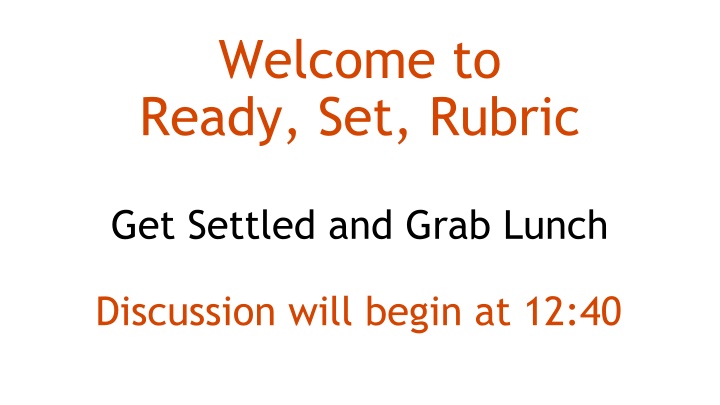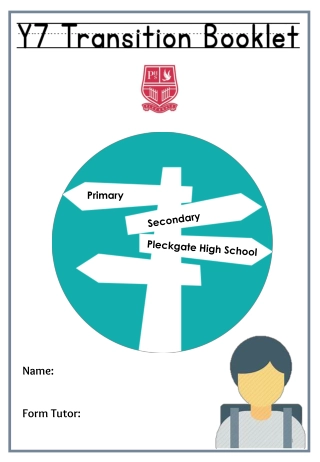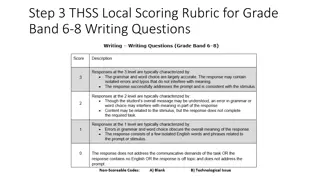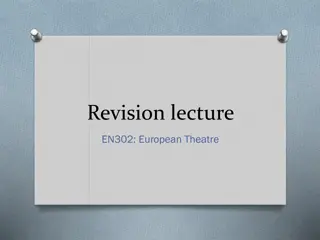Welcome to Ready, Set,Rubric
This insightful content covers the importance of rubrics in education, explaining the ground rules for discussions, benefits of rubrics for students and faculty, types of rubrics, parts of rubrics, and a class participation rubric. Explore how rubrics clarify expectations, streamline grading, promote fair assessments, and enhance student participation.
Uploaded on Feb 16, 2025 | 0 Views
Download Presentation

Please find below an Image/Link to download the presentation.
The content on the website is provided AS IS for your information and personal use only. It may not be sold, licensed, or shared on other websites without obtaining consent from the author.If you encounter any issues during the download, it is possible that the publisher has removed the file from their server.
You are allowed to download the files provided on this website for personal or commercial use, subject to the condition that they are used lawfully. All files are the property of their respective owners.
The content on the website is provided AS IS for your information and personal use only. It may not be sold, licensed, or shared on other websites without obtaining consent from the author.
E N D
Presentation Transcript
Welcome to Ready, Set, Rubric Get Settled and Grab Lunch Discussion will begin at 12:40
Ground Rules One person speaks at a time Engage in respectful dialogue Promote authentic conversations safe space to speak freely Listen to understand, not to respond Trust one another s experiences Share concerns or challenges with the group challenge the idea not the person Equal participation be mindful to let others speak Ask questions; avoid statements
Benefits of Rubrics For students, rubrics: clarify the instructor s expectations regarding the assignment, provide criteria for achieving learning objectives, and can be used as a guide when developing their assignment. For faculty, rubrics: can be used to assess any criteria or behavior; help to make the grading process quicker, fairer, and more transparent; allow for consistent grading, from the first assignment through the very last; and serve as a reliable grading scale.
Types of Rubrics Analytic Rubrics - today s focus An analytic rubric breaks down the objective into specific component parts. Every section is scored independently using a rating scale. Developmental Rubrics Developmental rubrics are closely related to analytic rubrics to the extent that they also measure skill based on a weighted system. Holistic Rubrics A holistic rubric is made up of a single scale with all criteria to be considered together.
Parts of Rubrics 1. Task Description 2. Scale What is the assignment? What are the levels of achievement? 3. Dimensions of the Assignment What is the breakdown of the skills/knowledge involved? 4. Performance Level Descriptions What specific feedback can be given for each level of each dimension?
Class Participation Rubric Reflect Individually, reflect on aspects of student participation in the classroom. Consider: What has worked in the past to elicit good participation? What doesn t work? What is the best way to participate in class? What do you observe (see or hear) when a student is participating well in class?
List On separate sticky notes, jot down descriptive words that communicate what an excellent class participant does. The fewer the words, the better. Each person creates 10 sticky notes.
Group and Label Each group member adds their sticky notes to the large post-it sheet. Work together to cluster similar ideas, creating 3-7 clusters. Using the markers, label each cluster. What kind of sticky notes are in the group? A label consists of 1-2 words. Labels will become the rubric dimensions.
Apply Select a 3-point scale from page 6 of the Rubric Roadmap. Create performance level descriptions. Sticky notes are the beginnings of the highest performance level. Continue to create the rest of the descriptions, starting with the lowest performance level (then fill in the middle). Learn more: How to turn sticky notes into descriptions https://www.youtube.com/watch?v=NVHlbRsjA10
Class Participation Debrief What was easy about this exercise? What was challenging? What did you notice about other rubrics? What questions emerged?
Rubric Roadmap Create a rubric for your own assignment: Prepare a clear task description for students (see page 5 of the Rubric Roadmap). Develop the rubric by working through the four stages: 1. Reflect 2. List 3. Group and label 4. Apply Review the finished rubric to evaluate its overall quality; the meta rubric on page 8 of the Rubric Roadmap can be used to do this.
Thank You for coming to Ready, Set, Rubric Center for Teaching and Learning Excellence Martha Diede - Director - madiede@syr.edu Nicholas Bennett - Program Support Coordinator - nsbennet@syr.edu http://provost.syr.edu/center-for-teaching-and-learning-excellence/ Institutional Effectiveness and Assessment Laura Harrington - Associate Director - lalvut@syr.edu Amanda Johnson Sanguiliano - Assessment Associate - aljohn07@syr.edu http://assessment.syr.edu/




















